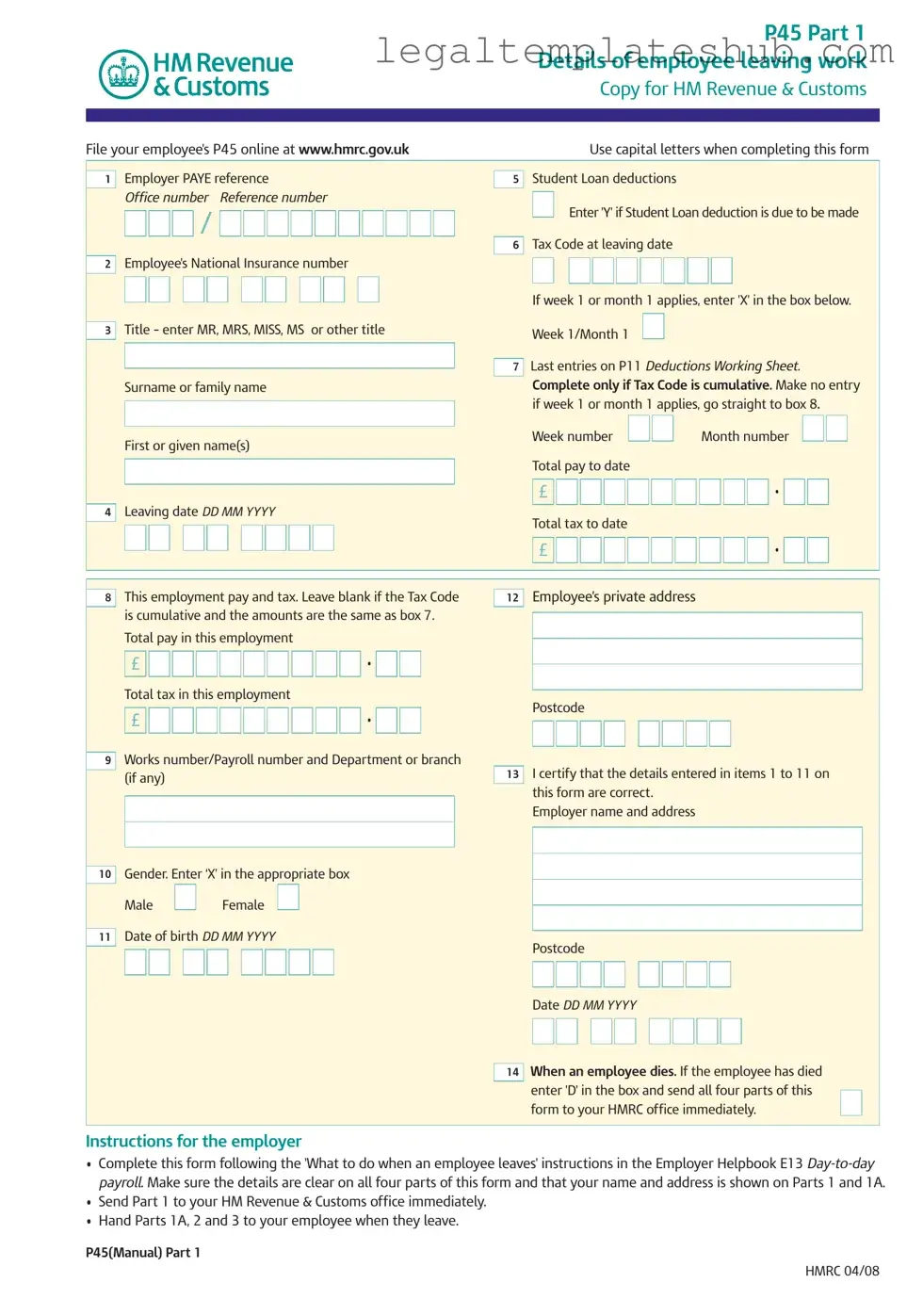Blank P 45 It PDF Form
The P45 It form is a crucial document used in the UK to record details when an employee leaves a job. This form is divided into three parts, with each part serving a specific purpose for the employer, employee, and new employer. Completing the P45 accurately ensures that tax records are maintained correctly and helps prevent overpayment of taxes.
To fill out the form, click the button below.
Access Editor
